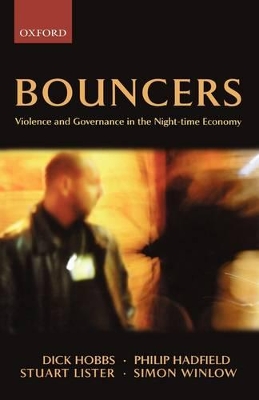Clarendon Studies in Criminology
2 total works
Lush Life: Constructing Organized Crime in the UK opens 'the box marked do not open, too difficult to deal with', in the words of one Assistant Chief Constable, to explore the contested notion of British organized crime. The first book to trace the history and policing of British organized crime, it addresses how the interlocking processes of de-industrialisation, globalisation and neo-liberalism have normalised activity that was previously the exclusive
domain of professional criminals.
With both historical and sociological analyses, informed by the author's long term connection to an ethnographic site called 'Dogtown', a composite of several overlapping neighbourhoods in East London, this book critically addresses cliches such as criminal underworlds and the notion of the criminal firm. It considers the precursors to British organized crime, as well as the careers of famous crime families such as the Krays and the Richardsons, alongside the emergence of specialised law
enforcement institutions to deal with this newly discovered threat. It also focuses on the various ways in which violence functions within organised crime, the role of rumour in formulating order within crime networks, the social construction of organised crime, the development of the cosmopolitan criminal
and the all-inclusive nature of the contemporary criminal community of practice. Permeating throughout is a discussion of the flexible nature of the criminal market, the constructed nature of the notion of organised crime, and the normalisation of criminality.
Underpinned by rich, context-specific examples, case studies, stories, and other qualitative evidence based on ethnographic research and interviews, Lush Life follows on from the author's work on normal crime (Doing the Business), and professional crime (Bad Business).
domain of professional criminals.
With both historical and sociological analyses, informed by the author's long term connection to an ethnographic site called 'Dogtown', a composite of several overlapping neighbourhoods in East London, this book critically addresses cliches such as criminal underworlds and the notion of the criminal firm. It considers the precursors to British organized crime, as well as the careers of famous crime families such as the Krays and the Richardsons, alongside the emergence of specialised law
enforcement institutions to deal with this newly discovered threat. It also focuses on the various ways in which violence functions within organised crime, the role of rumour in formulating order within crime networks, the social construction of organised crime, the development of the cosmopolitan criminal
and the all-inclusive nature of the contemporary criminal community of practice. Permeating throughout is a discussion of the flexible nature of the criminal market, the constructed nature of the notion of organised crime, and the normalisation of criminality.
Underpinned by rich, context-specific examples, case studies, stories, and other qualitative evidence based on ethnographic research and interviews, Lush Life follows on from the author's work on normal crime (Doing the Business), and professional crime (Bad Business).
In recent years, the expansion of night-time leisure has emerged as a key indicator of post-industrial urban prosperity, attracting investment, creating employment, and re-generating the built environment.
These leisure economies are youth-dominated, focusing upon the sale and consumption of alcohol. Unprecedented numbers of young people now flock to town centres that are crammed with bars, pubs, and clubs, and the resulting violent disorder has over run police resources that remain geared to the drinking patterns and alcohol cultures of previous generations.
Post-industrial re-structuring has spawned an increasingly complex mass of night-time leisure options through which numerous licit and illicit commercial opportunities flow. Yet, regardless of the fashionable and romantic notions of many contemporary urban theorists, it is alcohol, mass intoxication, and profit rather than 'cultural regeneration,' which lies at the heart of this rapidly expanding dimension of post-industrial urbanism.
Private security in the bulky form of bouncers fills the void left by the public police. These men (only 7% are women), whose activities are barely regulated by the State, are dominated by a powerful subculture rooted in routine violence and intimidation.
Using ethnography, participant observation, and extensive interviews with all the main players, this controversial book charts the emergence of the bouncer as one of the most graphic symbols in the iconography of post-industrial Britain.
These leisure economies are youth-dominated, focusing upon the sale and consumption of alcohol. Unprecedented numbers of young people now flock to town centres that are crammed with bars, pubs, and clubs, and the resulting violent disorder has over run police resources that remain geared to the drinking patterns and alcohol cultures of previous generations.
Post-industrial re-structuring has spawned an increasingly complex mass of night-time leisure options through which numerous licit and illicit commercial opportunities flow. Yet, regardless of the fashionable and romantic notions of many contemporary urban theorists, it is alcohol, mass intoxication, and profit rather than 'cultural regeneration,' which lies at the heart of this rapidly expanding dimension of post-industrial urbanism.
Private security in the bulky form of bouncers fills the void left by the public police. These men (only 7% are women), whose activities are barely regulated by the State, are dominated by a powerful subculture rooted in routine violence and intimidation.
Using ethnography, participant observation, and extensive interviews with all the main players, this controversial book charts the emergence of the bouncer as one of the most graphic symbols in the iconography of post-industrial Britain.

